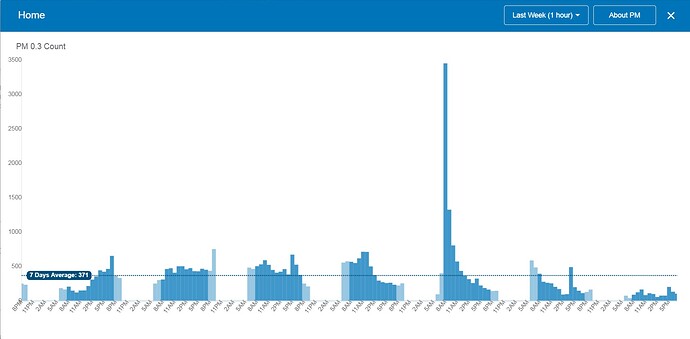Good questions.
All the PMs spiked. CO2 did not. The monitor is indoors, about 105 ft from the center of the road. According to the personal weather station at the end of the street, wind was dead calm.
The soil here is almost all sand, very erodable. We are actually organizing around severe erosion and flooding from the creek that runs through many of our properties.
This neighborhood has lawns mowed some by services and some by homeowners. Mostly with riding and zero turn mowers which kick up a lot of very fine dust, with some use of leaf blowers as well. Dust gets deposited everywhere - on my home the outside windowsills have to be cleaned every year; the aluminum trim and vinyl siding under soffits where there is less air movement, collects it as well.
If you watch the video that I linked to in the first post, this is just three months prior. The town uses diesel mechanical broom sweepers.
My understanding of these charts is that the spike on each is an hour or less. This corresponds to the sweeper traveling past my home and three more, turning around at the corner and traveling past again. Maybe 15 minutes at the most.
Your comment re tire dust is interesting. I wonder how much of it is washed into the stream, vs suspended in the air. Unfortunately your bot is not allowing the link to USGS re 6PPD, a rubber additive that reacts with ozone and harms fish.
I have screenshots showing all PM spikes, CO2 and calm wind but can only post one image.





